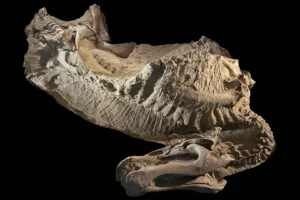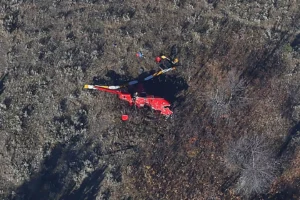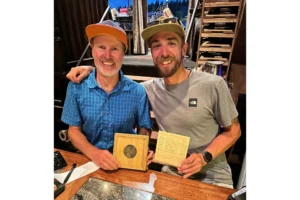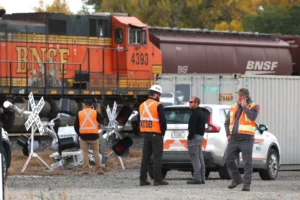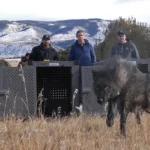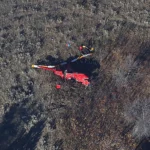FRIDAY FOCUS: Executive Director of Wyoming’s Kindness Ranch Makes National Headlines for Beagle Saves
John Ramer shares his passion for saving lab, medical test animals
- Published In: Other News & Features
- Last Updated: Feb 10, 2023

By Jennifer Kocher
Special to the Wyoming Truth
John Ramer made national headlines last fall when he helped rescue over 4,000 beagles from a Virginia facility that bred dogs for medical research after it was shut down by the U.S. Department of Justice for a myriad of violations. Of those beagles, nearly 200 were brought to the Kindness Ranch in southeast Wyoming, while the rest were placed among 120 rescue organizations and shelters nationwide. To date, almost all of those beagles in Wyoming have been adopted, along with more from other sources that arrive all the time.
The 1,200-acre Kindness Ranch, near Hartville, is the only animal sanctuary of its kind in the country that only houses animals used in medical or lab research at the end of clinical trials in lieu of euthanasia. Ramer, 50, became executive director in 2019 after spending a decade working or volunteering at animal sanctuaries, including a wolf sanctuary in New Mexico. He also helped to rescue squirrel monkeys in Florida that had been used in nicotine testing.
Ramer, a former DJ and high school music teacher from Salem, Ore., got hooked on animal rescue and rehabilitation in 1999 while visiting a former girlfriend at an animal refuge in Utah. Now, he oversees a staff of 14 employees and builds relationships with animal testing and medical lab facilities to save as many animals as possible. He lives onsite with his wife, Katy, and their adopted beagles (Uno and Cammie), golden Labrador retriever (Lexi) and mixed breed (Rocky).

Ramer recently spoke to the Wyoming Truth about his work. What follows are excerpts from the conversation.
Can you tell me about the history of the Kindness Ranch?
Ramer: Kindness Ranch was started by Dr. David Groobman in 2007 with the intention of providing not just a destination facility for people to come to visit, interact with and learn from animals, but a successful area of transition for animals to come out of research facilities and live a comfortable life where they would thrive both mentally and physically.
The ranch is well known for its beagle rescues. Why beagles?
Ramer: Beagles are the most commonly used breed in lab experiments, research and animal testing due to their affectionate personalities and willingness to please as well as forgive. They also have a certain resilience to discomfort and will most always keep an appetite.
Along with beagles, what other animals live at the Kindness Ranch?
Ramer: We do have a constant rotation of beagles coming through our doors. Soon, however, we will be introducing more breeds, albeit slowly, though we will always mainly have beagles. We also have cats, horses, cows, llamas, goats, pigs and rabbits. At any given time, we average just over 100 animals on site.
Your staff includes dog and cat trainers who work with the animals to get them socialized and ready for adoption. What is that process like, and what are some behaviors the animals exhibit when they arrive at your sanctuary?
Ramer: In many cases, these animals have lived in cages and have never been outside or even touched the ground. They’ve also not had much – if any – interaction with humans or received any attention. They’re used to living in mostly soundproof rooms and cages and have not been exposed to any stimuli. Therefore, sounds and smells overwhelm them out once they leave the facilities, because they are used to living in sterile facilities and controlled environments. Our staff and volunteers work with the beagles and other animals to socialize them to be around humans and other dogs. It might take anywhere from four to six weeks to slowly get them used to the sounds, smells and movements of ordinary life.
It’s no doubt a delicate balance working with product testing and clinical labs to rescue the animals that would otherwise be euthanized.
Ramer: A large portion of my role is to simply try to develop the relationships we have with existing facilities and forge new relationships with others. We bring in animals, judgment free, from research facilities and never disclose [their] origin. The trust between us and the research facilities is paramount; if it were violated, we would potentially be putting future animals to their deaths.
These facilities, for as long as they exist, work in near complete secrecy. The nature of their business is to fly under the radar and maintain anonymity. So until there are alternatives to the work that they do, we will simply do our best to quietly offer the transition from their place to ours.

What’s the hardest part about your work?
Ramer: Admitting that we cannot save them all – both research or non-research animals.
What’s the most gratifying part of animal rescue?
Ramer: I know that this question is where I am supposed to say, “Adopting out a dog or cat to their forever home.” And that is true, though for me personally, the most gratifying part is when I can approach a new facility that has never released animals to an outside agency, and I am able to show them that this is a viable alternative to their regular practices. As amazing and beautiful as it is to see one animal go to its new home, the days that I can secure the release of an additional 30 or 40 or more to put into future homes is a pretty amazing feeling in itself.
Are there any rescues or projects in the works for the Kindness Ranch?
Ramer: We are looking into new social media alternatives, something like Patreon or other free or inexpensive alternatives to Facebook, Twitter, TikTok and the like…It is important for people to know the work that we do, though it is also, and some would argue, more important for us to get our friends and supporters timely and accurate information. Many social media platforms are plagued by manipulated or out of context stories which can make it even more difficult for us to show not just our donors, but our current and future research facilities, that we are holding true to our promise of judgment-free anonymity.
How can people help?
Ramer: Spread the word! Sign up for our newsletter on our website. Tell your friends about us, come visit, volunteer. We have beautiful guest facilities available and lots of opportunities to interact with animals. We are proof that these beautiful creatures can thrive after research. But the only way the world will know is if the word gets out.

